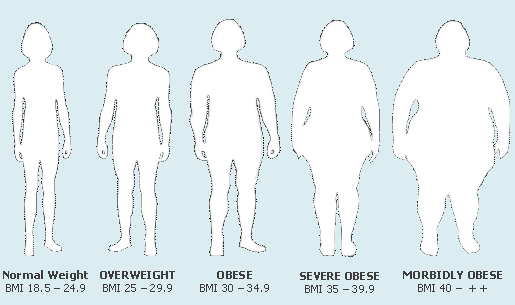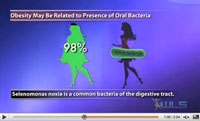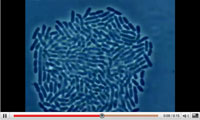| |
Did you know that you swallow around one gram (0.353 oz) of bacteria per day? Thatís around 100 billion (1 x 1011) bacterial cells! Bacteria are one of the oldest forms of life, first appearing in the fossil record nearly 3.5 billion years ago. They are also one of the most diverse organisms on earth with a huge variety of shapes, sizes, and specializations. While bacteria are commonly depicted as “bad” in movies and on TV and the Internet because of their contributions to disease, the majority of bacteria are actually necessary for your health and for the evolution of the planet as you know it. For example, plants cannot undergo photosynthesis without certain bacteria present to process nutrients from the soil. Humans would not be able to live without the beneficial E. coli bacteria that inhabit the stomach and make digestion possible. [But itís not all sweetness and light. See the What A Year! story for April, 2007, When Good Bacteria Turn Bad.]
There are hundreds of species of bacteria in the human body, with the oral cavity (mouth, nose, and throat) being populated by an estimated 700 different bacterial species. In fact, your body contains more bacterial cells than human cells. Bacteria play a huge role in human physiology, so it is reasonable to think that they could actually influence bodily functions and the development of disease. “Since the oral cavity contains the most species of bacteria compared to any other bodily cavity, it was a good place to begin looking for bacterial connections to disease,” said Dr. J. Max Goodson of the Forsyth Institute in Boston, MA. Dr. Goodson is a dentist and pharmacologist who researches the link between oral bacteria and the development of overweight and obesity.
Is What A Year! Obsessed with Obesity?
OK, we admit that What A Year! is interested in obesity (and diabetes) because they are a growing problem, especially among children and teenagers, and the health damages associated with them take a toll on obese kids as they age into young adulthood and beyond.

Overweight and obesity are growing trends in the United States that are generally associated with the consumption of too many calories coupled with insufficient exercise. The Centers for Disease Control and Prevention report that more than one-third of American adults over the age of 20 years are characterized as obese and an additional one-third are characterized as overweight. In addition to the influence of lifestyle on the growing rates of overweight and obesity, Dr. Goodson believes that oral bacteria may play a role. According to Dr. Goodson, oral bacterial colonies may be able to influence metabolism so that a shift in bacterial species could cause weight gain. This hypothesis is supported by previous work in mice and rats that showed that obesity seemed to be related to the species of bacteria populating the animals’ mouths and gastrointestinal tracts.
Please Spit Into This Cup
To begin to test his hypothesis, Dr. Goodson and his colleagues conducted a study of the oral bacterial populations of more than 300 women in the Boston area. The women in the study were classified as overweight using the Body Mass Index (BMI) calculation. The oral bacterial populations of these women were compared to more than 230 healthy women who were classified as normal weight using the BMI. Samples of oral bacteria were collected from all participants by having each person spit in a cup. The saliva samples were then analyzed using DNA-DNA hybridization. This new technique uses DNA analysis of bacterial DNA to identify species of bacteria. In this experiment Dr. Goodson and his colleagues focused on 40 species of oral bacteria.
 Slice of a selenomonad bacterium, showing characteristic “crescent moon” shape of the genus. Slice of a selenomonad bacterium, showing characteristic “crescent moon” shape of the genus.
The researchers found that the levels of many species of bacteria differed between the overweight and control groups. In particular, women were able to be identified as overweight over 98 percent of the time based on the presence of one species of bacteria, Selenomonas noxia. This is an astounding degree of correlation. In previous studies, S. noxia has also been associated with the development of gum disease, or periodontitis, in both children and adults. “These are initially promising results,” said Dr. Goodson ”that should be explored further with much more additional research.“ Dr. Goodson is careful to point out that his results do not necessarily indicate a direct link between S. noxia bacteria and obesity. An indirect link is equally possible: for example, the oral bacteria absorb sugars and stimulate the body to eat more, which can lead to obesity. Another possibility is that bacteria promote the absorption of sugar that is then stored as fat, causing an increase in body weight. Regardless of the reason for the association of oral bacteria and overweight and obesity, if further studies support Dr. Goodsonís initial results that S. noxia bacteria populations may indicate obesity, he imagines it would be relatively simple to design a diagnostic test for the bacteria that could be bought over the counter and administered at home.
What Next?
But there is still much work to be done before an oral bacteria test ever shows up in your drugstore or reaches consumers. The first priority on Dr. Goodsonís list is to conduct the same experiment again to see if his first results can be duplicated. If they can, it would provide further evidence for the link between S. noxia and obesity. He also wants to conduct a longitudinal study of how the oral bacteria populations of children change over time. “My hope is that this research will change how people think of oral bacteria and oral hygiene in relation to the health of the entire body,” he said.
Dr. J. Max Goodson is the Director of Clinical Research at the Forsyth Institute for Dental Medicine and an Associate Professor of Periodontology at the Harvard School of Dental Medicine. Dr. Goodson decided to pursue science in high school and went to school to become a dentist. After graduating from dental school, though, he decided that instead he wanted to do research, so he went back to school to get a doctorate in pharmacology. In graduate school he studied antibiotics, which is how he became interested in bacteria and oral bacteria in particular. When not in the lab, Dr. Goodson loves working in his garden, traveling, and making jewelry. “Most people donít realize that dentists spend a lot of time working with gold and silver,” said Dr. Goodson. “I can apply the skills I learned in dentistry to my jewelry.” He has these words of advice to students interested in science and research: “Never underestimate the value of an advanced degree.”
For more information:
- Goodson, J.M., D. Groppo, S. Halem, and E. Carpino. 2009. ”Is Obesity an Oral Bacterial Disease?“ Journal of Dental Research, 88(6): 519-523.
To learn more:
Bacteria:
- University of California Museum of Paleontology. http://www.ucmp.berkeley.edu/bacteria/bacteria.html
Written by Rebecca Kranz with Andrea
Gwosdow, Ph.D. Gwosdow
Associates
HOME | ABOUT | ARCHIVES | TEACHERS | LINKS | CONTACT
All content on this site is © Massachusetts
Society for Medical Research or others. Please read our copyright
statement — it is important. |
|
|

Dr. Max Goodson
Sign Up for our Monthly Announcement!
...or  subscribe to all of our stories! subscribe to all of our stories!

What A Year! is a project of the Massachusetts
Society for Medical Research.
 The Forsyth Institute, Boston, MA The Forsyth Institute, Boston, MA
Here's a YouTube video with a news report on Dr. Goodson’s research: http://www.youtube.com/watch?v=KuO0lRnP-L0

And hereís a peppy YouTube video in which the very upbeat Mama Gums reminds us in song of all the benefits of good oral health: http://www.youtube.com/watch?v=AIA6pjtzYYE 
Want to know why you should wash your hands and brush your teeth and clean that cutting board really well? Check out this 15-second video showing how bacteria reproduce: http://www.youtube.com/watch?v=gEwzDydciWc 
|
|

